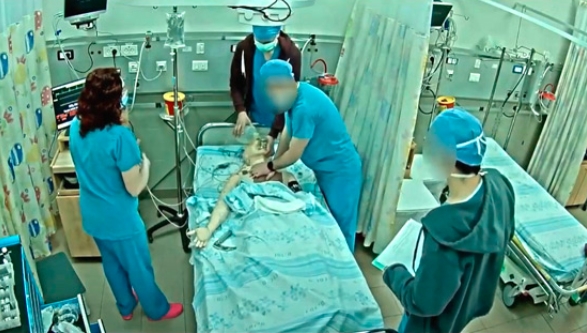A team of researchers from Edinburgh University has developed a scalpel that can measure the amount of force applied by surgeons during procedures. The scalpel could be used to assess and improve the skills of trainees and pave the way for robotic surgery.
How the scalpel works
The scalpel has a force-sensing system that consists of two thin layers of metal separated by a thin layer of air. When the scalpel is pressed against a surface, the air layer is compressed and changes the electrical resistance of the system. The scalpel can then detect the amount of force applied by measuring the change in resistance. The data collected by the scalpel can be analyzed by a computer program to evaluate the performance of the user.
Why force is important in surgery
The amount of force applied by surgeons during procedures is known to be important for several reasons. First, it affects the quality of the incision and the healing process. Too much force can cause tissue damage, bleeding, infection, and scarring. Too little force can result in incomplete or inaccurate cuts. Second, it reflects the skill and confidence of the surgeon. Experienced surgeons tend to apply less force and more control than novices. Third, it influences the outcome and safety of the patient. Excessive or insufficient force can lead to complications, errors, or injuries.

How the scalpel was tested
The researchers tested the scalpel by tracking 12 medical students and two surgeons as they performed an elliptical incision on a synthetic material that mimics human skin. The elliptical incision is a common procedure used to remove moles and skin lesions such as melanoma. The researchers compared the results from the scalpel with those from traditional methods of evaluation, such as visual assessment by experienced practitioners. They found that the scalpel could accurately measure the force applied and distinguish between different levels of skill.
What are the benefits of the scalpel
The scalpel has several potential benefits for surgery training and practice. First, it could provide objective and immediate feedback to trainees and help them improve their skills and confidence. Second, it could enable standardized and automated assessment of surgical skills across different institutions and countries. Third, it could facilitate remote supervision and mentoring of trainees by experts who can access the data from anywhere. Fourth, it could assist in developing robotic devices that can perform surgery with optimal force and precision.
What are the challenges and limitations of the scalpel
The scalpel also faces some challenges and limitations that need to be addressed before it can be widely adopted. First, it needs to be validated in real-life scenarios with human patients and different types of procedures. Second, it needs to be integrated with other sensors and systems that can measure other aspects of surgical skills, such as motion, vision, and cognition. Third, it needs to be compatible with existing surgical instruments and equipment. Fourth, it needs to comply with ethical and legal regulations regarding data privacy and security.
What are the future prospects of the scalpel
The researchers are optimistic about the future prospects of the scalpel and hope that it will revolutionize surgery training and practice. They plan to conduct further trials with more participants and procedures to test its effectiveness and reliability. They also hope to collaborate with other researchers and industry partners to develop more advanced versions of the scalpel that can perform multiple functions and communicate with other devices. They envision that one day, the scalpel will be used by trainees across the world and by robotic devices that can perform surgery autonomously.


















